Recent Articles
Popular Makes
Body Types
2018 Ford Focus RS vs. 2018 Subaru WRX STI: Which Is Best?
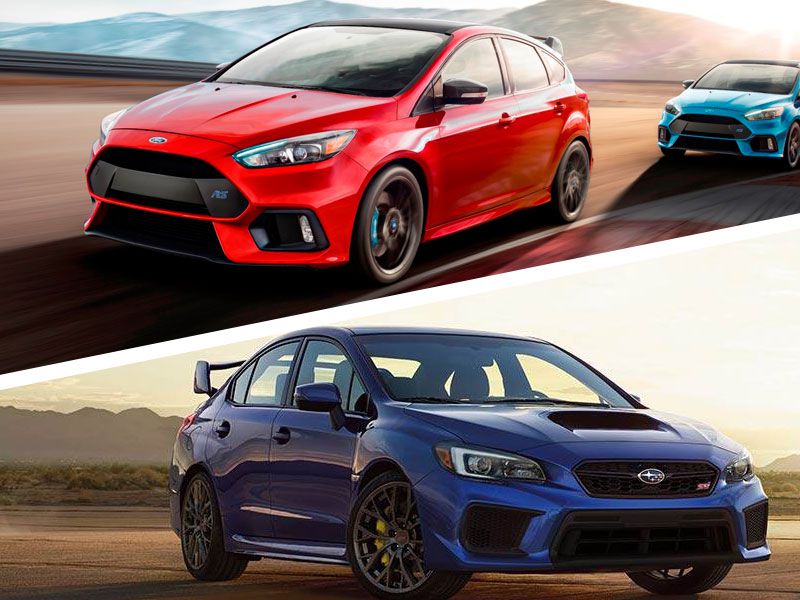
2018 Ford Focus RS vs Subaru WRX STI ・ Photo by Ford / Subaru
If you’re in the market for a small car with a decent amount of performance cred, then chances are both the Ford Focus RS and the Subaru WRX STI have been on your radar. But which is best — the STI that has been around for a number of generations or the RS that is fairly new, at least to our shores?
In order to help you come to an informed decision, the expert editors at Autobytel have compared the two cars across multiple categories including exterior styling, interior quality, infotainment, performance, safety, and more. Read on to discover the winner in these categories and our overall pick.
Exterior Styling
While the Focus RS is only available as a five-door hatchback, for the last few years the Subaru WRX STI has only been available as a four-door sedan. With its big hood scoop and massive rear wing, the STI is aggressive-looking and quite attractive for a sedan, but nothing can quite beat the look of a good hot hatch.
And that’s a look that the Focus RS pulls off very well (without going too overboard) with its big sculpted front-fascia, large rear wing, prominent dual exhaust, and rear diffuser. We realize that styling is largely subjective and feel free to disagree with us, but we think the Focus RS is the better looking of the two.
Ford Focus RS
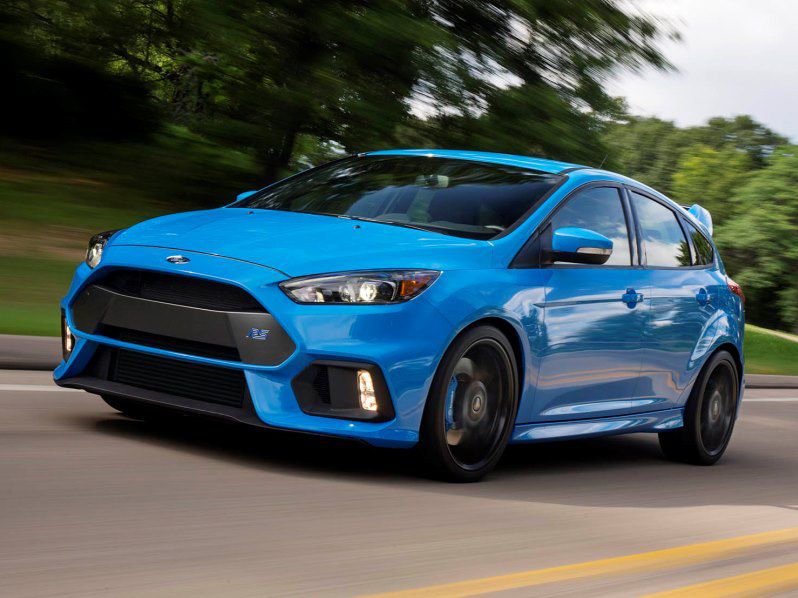
Photo by Ford
Interior
Neither model features a particularly high-grade interior when you consider the asking price of the two cars. Both models have leather seating surfaces, but the other materials in the Focus RS look and feel just a little bit better than those in the STI. The Recaro seats found in the RS are very supportive, but some drivers might find them a little bit tight as well as difficult to get into a comfortable position.
The STI is also available with Recaro seats, but they seem to fit more drivers, partially because they are easier to adjust. Both designs are functional enough, and though we prefer the Focus’ instrument cluster, the Subaru’s interior is less busy-looking overall.
Tie
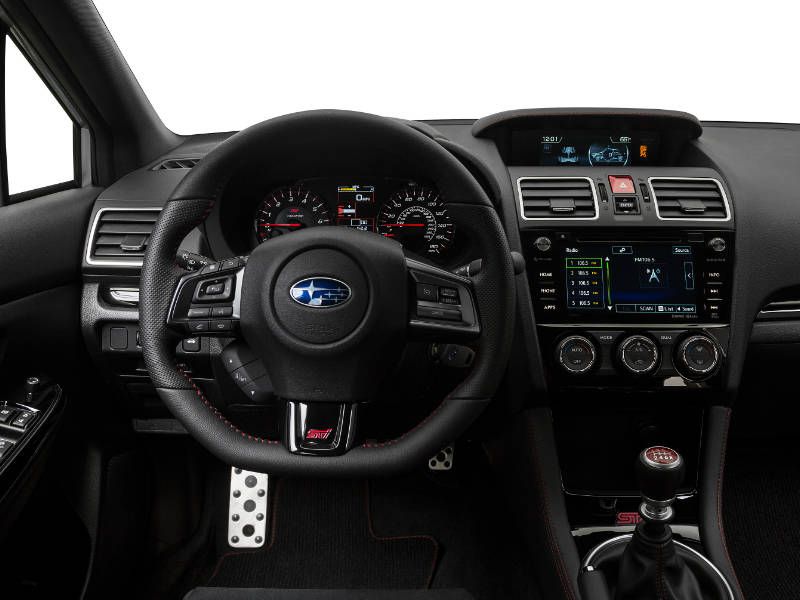
Photo by Subaru
Engines
As is the current norm for the hottest of cars in the compact car category, both the Focus RS and WRX STI use turbocharged four-cylinder engines, but that’s where the similarities end. The Ford is powered by a fairly traditional 2.3-liter “EcoBoost” straight-four engine that generates an impressive 350 horsepower and 350 lb-ft of torque (which works out to an impressive 152 horsepower per liter).
The Subaru uses a 2.5-liter horizontally-opposed “Boxer” flat-four engine that delivers 305 horsepower and 290 lb-ft of torque. That works out to a slightly less impressive 122 horsepower per liter, though 2019 models will get a small bump to 310 horsepower, or 124 horsepower per liter.
Ford Focus RS
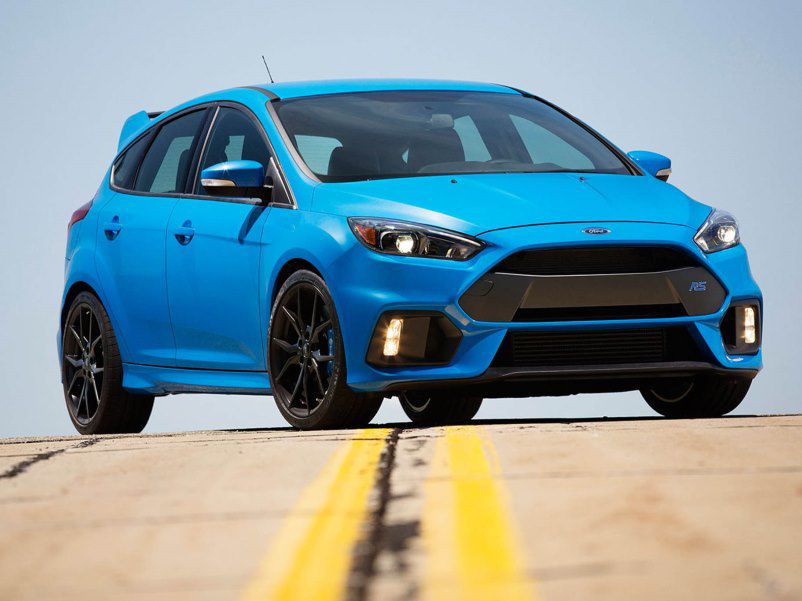
Photo by Ford
Drivetrains
Both the Focus RS and the WRX STI are available exclusively with six-speed manual transmissions, and both send power to all four wheels, but the all-wheel drive systems used in the two cars are quite different.
The WRX STI uses a driver adjustable center differential that can vary the torque split from 41/59 front/rear to 50/50, combined with a helical-type front differential and a Torsen rear differential. The Focus RS forgoes the center differential and instead uses a rear differential with clutches that can send up to 70 percent of the engine’s power to the rear wheels (all of which can be sent to either of the rear wheels individually for torque vectoring) and a Torsen differential in the front.
Tie
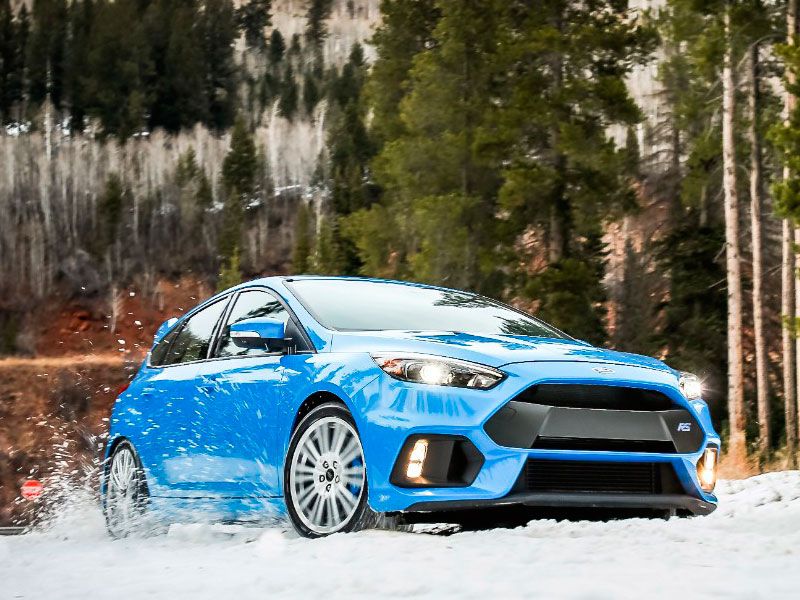
Photo by Ford
Handling and Performance
The Focus RS is marginally heavier than the WRX STI, but its extra power means that it’s quicker to 60 miles per hour, getting there in a little over 4.5 seconds versus the STI’s time of slightly over five seconds. The Focus RS is also easier to drive to quickly and has more outright grip (unless you’re in the Ford's drift mode) and less understeer than the WRX STI.
That said, experienced drivers might prefer the more mechanical feel of the STI and the extra work that it takes to drive it quickly. The STI also has a better ride than the RS, which is noticeably rough even with the suspension in its more comfortable setting.
Tie
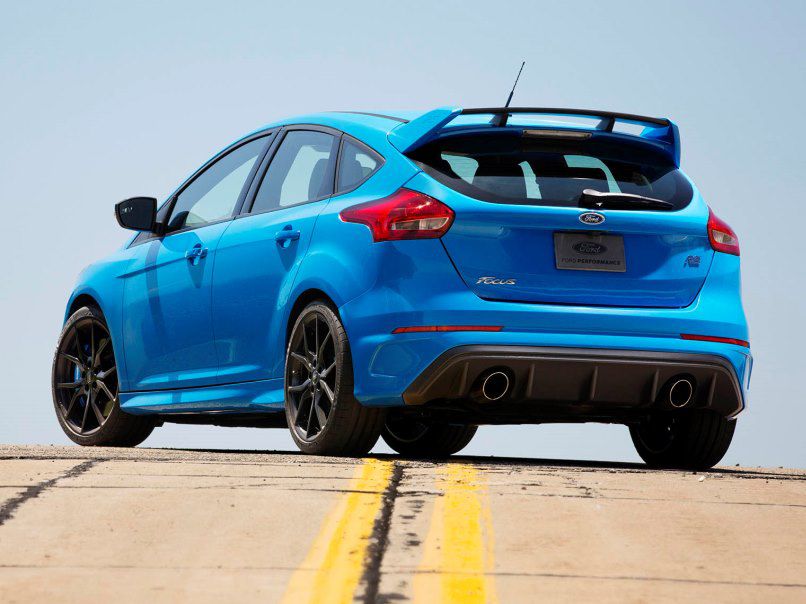
Photo by Ford
Infotainment and Audio
The Focus RS uses Ford’s Sync 3 infotainment system with an 8-inch touchscreen and a 10-speaker (including a rear-mounted subwoofer) Sony audio system with a voice-activated touchscreen navigation system, plus a five-year prepaid SiriusXM Traffic and Travel Link trial subscription.
The STI comes standard with a 7-inch version of Subaru’s Starlink Multimedia Plus system, with navigation available on the Limited trim level. Standard STIs come with a six-speaker audio system, but Limited versions come with a nine-speaker Harman Kardon system. Both systems perform similarly, but of the two infotainment systems the Ford’s has more features and is slightly better to use, though it does lack the STI’s traditional 1/8-inch aux input. Neither system offers cellular connectivity or Wi-Fi hotspots.
Ford Focus RS
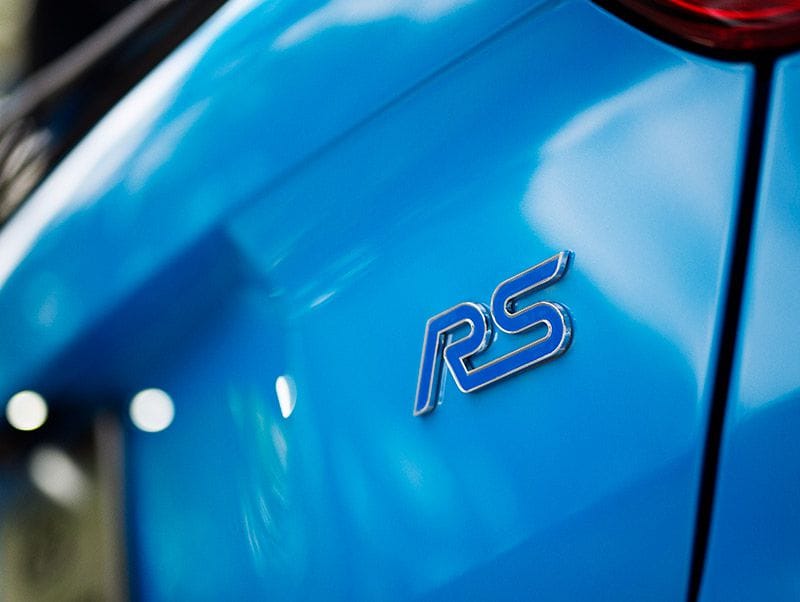
Photo by Ford
Practicality
As a hatchback, the Focus RS obviously features more cargo space (especially with its rear seats folded flat) than the STI, but the Focus has one of the smaller cargo compartments in the compact hatchback segment while the STI has a remarkable amount of trunk space for a sedan of its size.
The STI also has more front-seat headroom (assuming you skip the sunroof) and a bit more than 2 inches of extra rear legroom, while on the other hand the Focus RS has almost an extra inch of rear headroom. It's also the more efficient of the two, with a combined fuel economy rating of 22 miles per gallon versus the STI’s 19 mpg.
Ford Focus RS
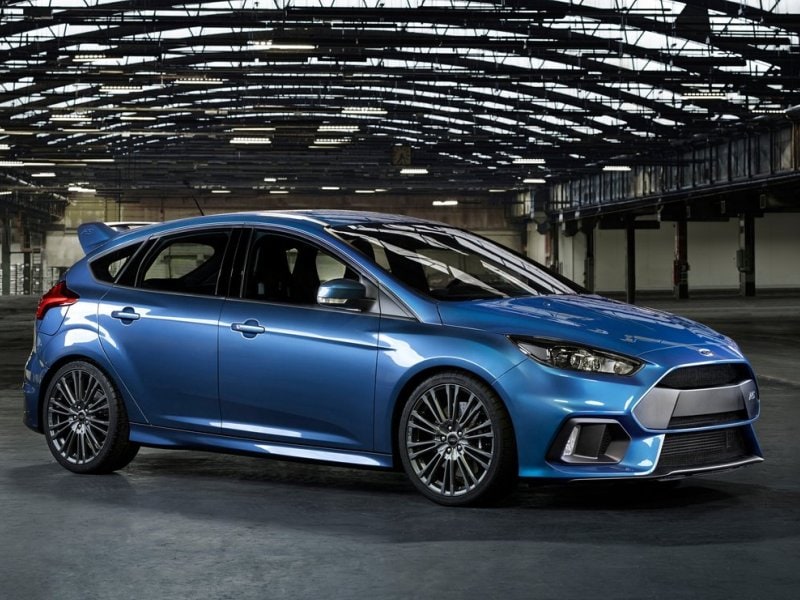
Photo by Ford
Safety
Neither the Focus RS (or any hatchback Focus) or the Subaru WRX STI has been rated by the IIHS. However, the regular Focus sedan is rated Good in most categories. The exceptions are the driver-side small overlap frontal test, in which it scores Acceptable; the passenger-side small overlap test, where it hasn’t been tested; and front-crash prevention, a technology that the Focus doesn't offer. Meanwhile, the base WRX earned a Top Safety Pick+ designation from the IIHS, though unlike the base WRX, the WRX STI lacks front-crash prevention technology.
Meanwhile, the Focus RS is rated five stars overall by the NHTSA, though it only scores four stars in the frontal crash and rollover tests. The WRX STI hasn’t been rated by the NHTSA, but it's derived from the previous-generation Subaru Impreza sedan, which matched the Focus' scores.
Tie
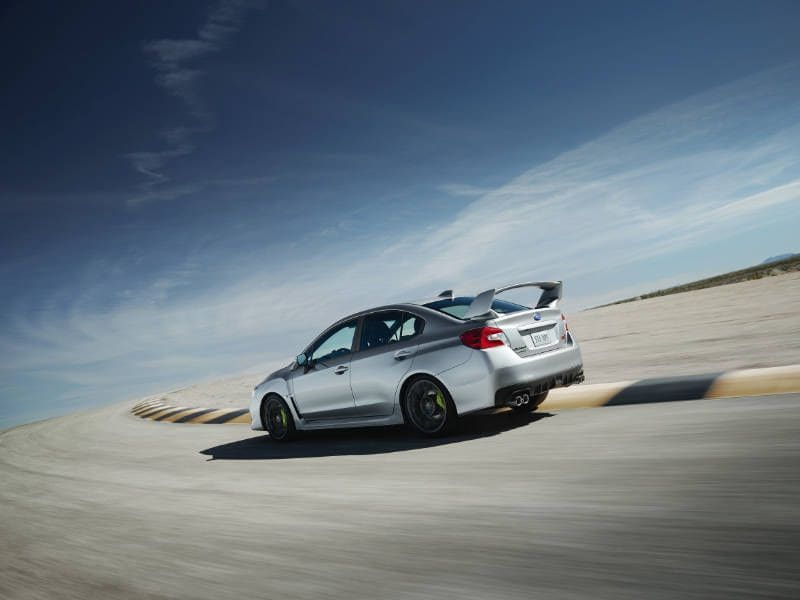
Photo by Subaru
Pricing and Features
Both the Subaru WRX STI and the Ford Focus RS are relatively expensive for compact cars, starting at $36,095 and $41,120 respectively. That means the Subaru is considerably more affordable than the Ford.
For that money, both models come standard with 19-inch wheels, a dual-zone climate control system, and heated seats, though the Ford also gets a heated steering wheel. The Subaru uses LED headlights where the Ford uses HIDs, but the Ford comes standard with fog lights, which aren’t available on the Subaru. And though the Impreza and the regular WRX are available with Subaru’s EyeSight driver assistance technology, which includes adaptive cruise control, pre-collision braking, and a lane-departure warning, those features are not available on either the STI or the Focus RS.
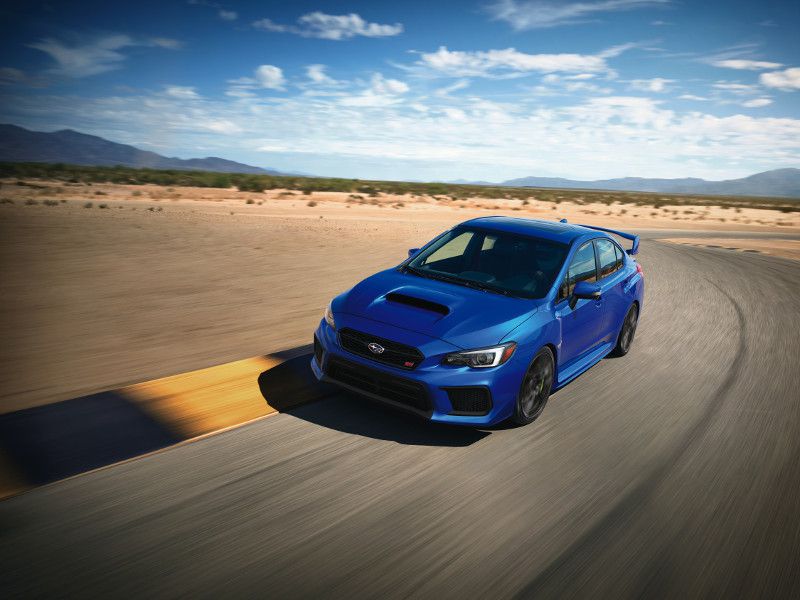
Photo by Subaru
Conclusion
Both the Subaru WRX STI and the Ford Focus RS offer tremendous performance and fun for the price. If you’re a taller person, have a tighter budget, or plan on using the car for a daily commute that involves driving on lots of rough roads, then the STI might be the better option,
But if it were our money, we’d have to go for the Focus RS. Sure, it’s a bit more expensive and has a rougher ride, but its extra power is addictive, it has more grip, and it’s more efficient at the pump. With four category wins to the Subaru’s one (with four ties) it’s the Ford Focus RS that wins this battle.
Ford Focus RS
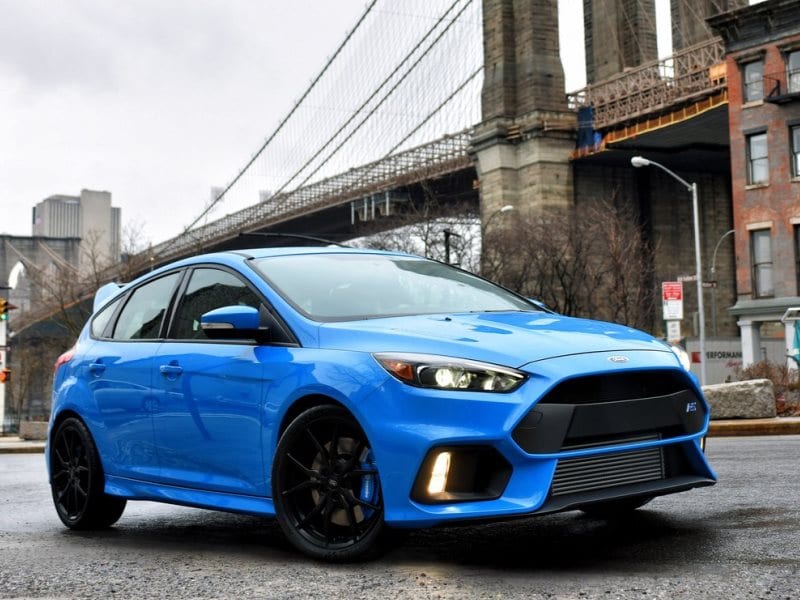
Photo by Ford